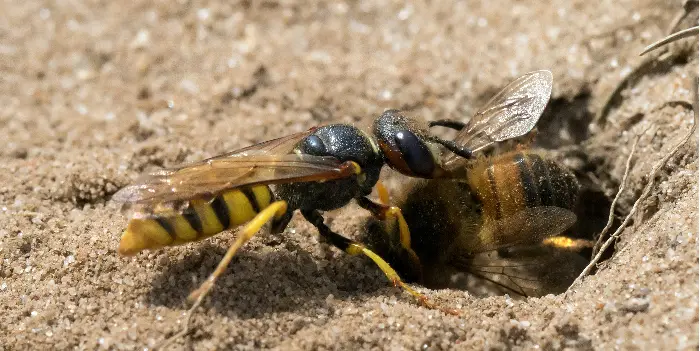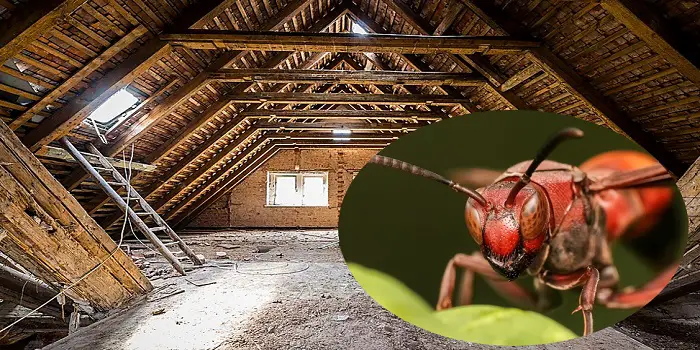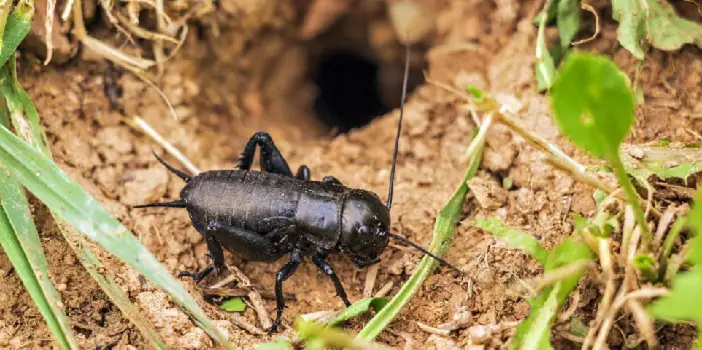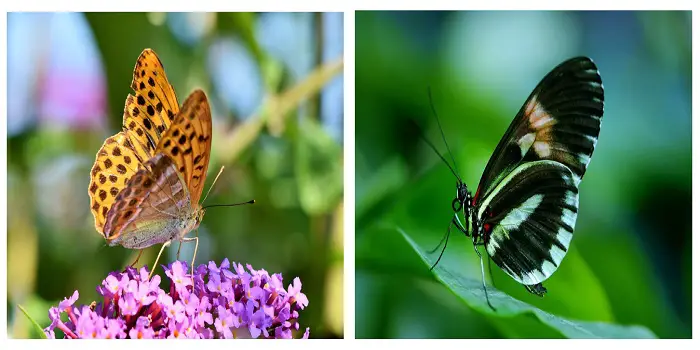
Butterflies play an essential role in pollination as they collect the pollens while they suck the nectar from flowers and carry it to different plants.
This aids in the development of new seeds for further reproduction.
You would be surprised to know that the beautiful butterflies are spread throughout the world, with around 20000 species.
Mexico is home to approximately 2000 butterfly species, followed by 725 species in the whole of America and 275 species in Canada.
We usually don’t pay much attention to what the different species do in their life, but it is a different case for the butterfly.
As they are eye-catchy and attractive, we show more interest in knowing more about their lifecycle and study a lot even from our school days which gives a basic knowledge about them.
Please continue reading below if you are eager to know more about Butterflies – like what they eat, whether they are harmful or categorized as pests, what you should do to get rid of them, and much more…
What do butterflies eat?
Natural nectar is a healthy drink for many butterflies as they use their tongue to suck it out from the flowers like a straw.
Not all butterflies drink nectar, and few will never go to the flowers at all, and they eat their food from rotten agricultural and animal matter and tree sap.
In general, Butterfly caterpillars have sweet teeth for different plant matters.
Some like to eat leaves, seeds, seedpods, and flowers.
With many butterfly species out there, every species has a liking for a particular plant species, and they target those plants to satisfy their hunger.
For instance, the asters species are targeted by the Pearl Crescent Caterpillars.
Gray Hairstreaks species eat plants of different species while others have a liking for single species of plant.
Most of the butterfly species eat only plants, and they don’t attack plants in agricultural fields.
If they do so, then they are not butterflies, but they are agricultural pests.
These agricultural pests can be food sources for butterfly caterpillar species like the Harvester.
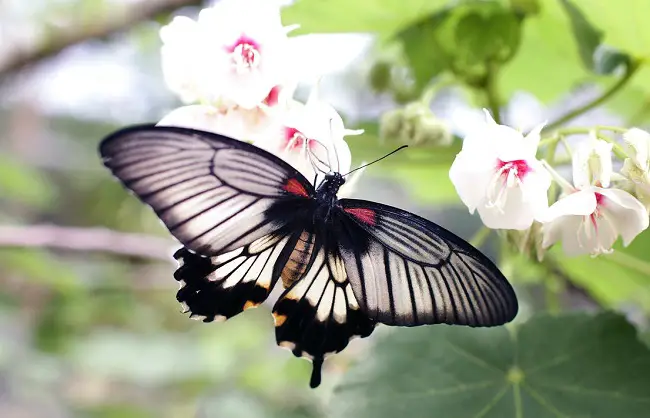
How do butterflies spend the winter?
The different species of butterflies choose the winter season to spend one part of their life cycle which is resistant to cold weather.
By God’s gift, they can identify this on their own and spend time during the winter accordingly.
Some species spend the winter season in the caterpillar stage, while others will spend it in the pupas level.
Species such as Nymphalis (also called tortoiseshells) and Polygonia (also called angel wings), when they reach adulthood, use the winter season to hibernate in tree holes, openings in man-made buildings, or cracks in the walls.
Some species during the winter season spend their time as hatched eggs.
During bad weather, to protect themselves and sleep peacefully, they tend to look for shelter under the base of the leaf or cracks in rocks, or in between the blades of grass.
How long does a butterfly live?
The ordinary life span of a butterfly varies from one week to one month.
Many other factors also decide it such as their place of residence, the species type to which they belong, climatic changes, life threats from predators, diseases, and getting hit by automobiles while flying.
Typically, in the wild-life, they have a lesser life span, and each passing day is a struggle for them.
Beating all the odds and with the presence of natural genes, some butterfly species like Tropical Heliconian, Monarchs, and Mourning Cloaks can live even up to nine months.
Where do butterflies lay their eggs?
Butterflies will select a plant to lay on their eggs, and mostly they choose the leaf top or bottom and sometimes on the flowers or stalks.
The eggs have a sticky cover that holds them firmly to the surface of the leaves to prevent them from falling.
When it is about to hatch, the caterpillars will eat and devour those eggs along with the leaf they eat.
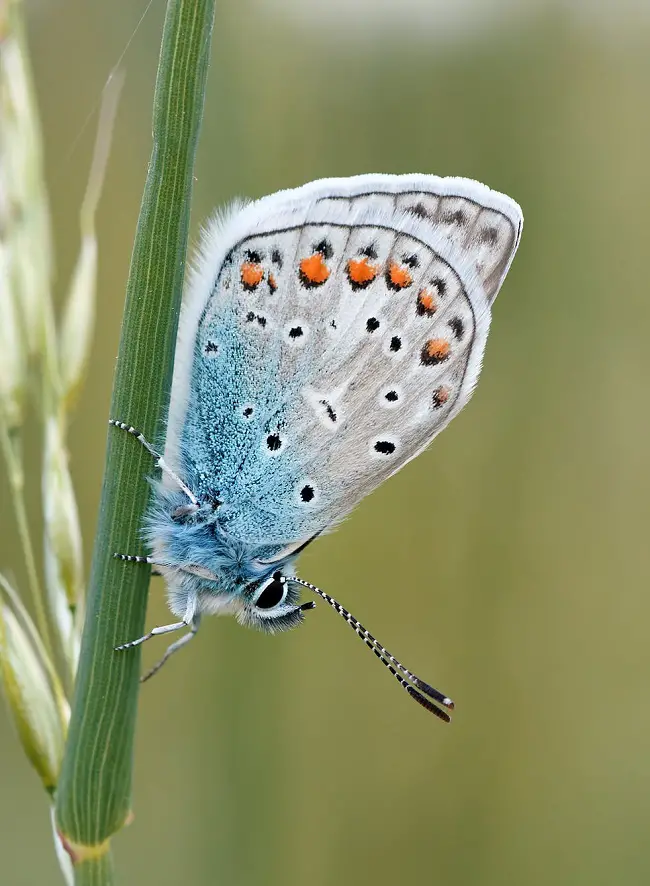
Do butterflies bite?
Keep in mind that butterflies do not bite humans or pets – simply because they can’t.
Some caterpillars do have jaws and can bite if they feel threatened. But once they become butterflies, their jaws are gone.
So, if you feel like, “can butterfly kill you” I would say no they cannot kill people or animals.
With that said, it’s important to know that Antimachus Swallowtail is the most poisonous butterfly in the world. It’s from Uganda with a wing span of 8 to 9 inches.
These butterflies have enough poison in their body that can kill small animals.
Also, there are a few African caterpillars whose fluids are very poisonous. They may be dangerous.
How do I get rid of a white butterfly?
Watching butterflies in your garden can be a mesmerizing scenario as they add beauty to the scenic ambiance.
But the white butterflies (zoological term: Pieris rapae) are a complete no-no for your garden.
This is because of the rupture they cause on different vegetable plants like broccoli and cabbage.
Below are a few ways to get rid of them, even though it may seem difficult in the first step.
1- Wade off the butterflies, caterpillars, and their eggs from the different plants.
2- Spray neem oil in them which acts as a good disinfectant.
3- Use white netting to cover your garden completely. This will protect from both butterflies and different birds.
Make sure you choose the right type of net, which gives sufficient room for the sunlight to enter.
4- Finally, use a combination of chili and garlic spray to repel white butterflies.
5- You can also consider planting trees that are naturally butterfly repellent, like rhubarb and French marigold.
For better results, use seaweed spray on these plants to keep the white butterflies at bay.
6- The kids like butterflies, and you can indeed encourage them to catch them using nets.
They will do it in a sportive manner, and you get the result of catching white butterflies successfully.
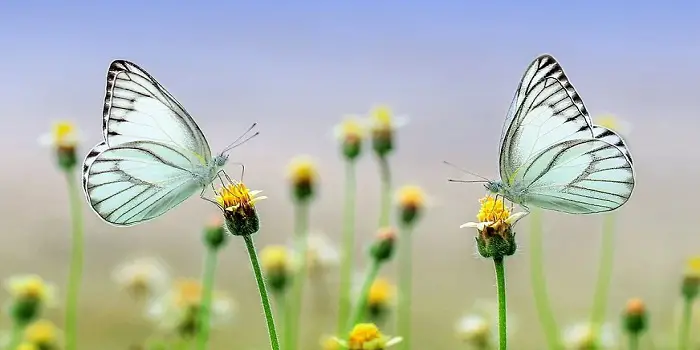
What is the difference between a butterfly and a moth?
Insects like butterflies and moths belong to the family of Lepidoptera. “Lepido” means scaly, and “ptera” means winged.
Both butterflies and moths resemble similar physical characteristics of scaly layered wings.
The family of Lepidoptera has many subdivisions, and Papilionoidea, called the true butterflies, and Hesperoidea, called the skipper butterflies, are super related to each other.
To distinguish the moth and the butterfly, you can look at their appearance and the time during which they are active.
Butterflies are usually vibrant in color, while the moths look dull generally.
Butterflies are active predominantly during the daytime, while the moths are active at night.
But sometimes, you may get confused with their appearance as the moths look attractive and the butterflies look lackluster.
So, the best part to distinguish is through their antennas.
The antennas of a butterfly look like a golf club, with a “club” at the end.
Moth’s antennas look like simple shafts with a taper towards their end, or sometimes it looks complex with many criss-cross filaments running in between.
Why is the monarch butterfly called the king of butterflies?
The name of the Monarch butterfly has a historical connection.
In earlier days, the Prince William of Orange (also known as King William III), which is at present located in Southern France, earned a good name among his fellow citizens.
Those European who when migrated to North America bestowed the name of “Monarch” to this striking and majestic orange-colored butterfly in memory of their beloved King.
As a result, from then on, it has been called the king of butterflies to date.
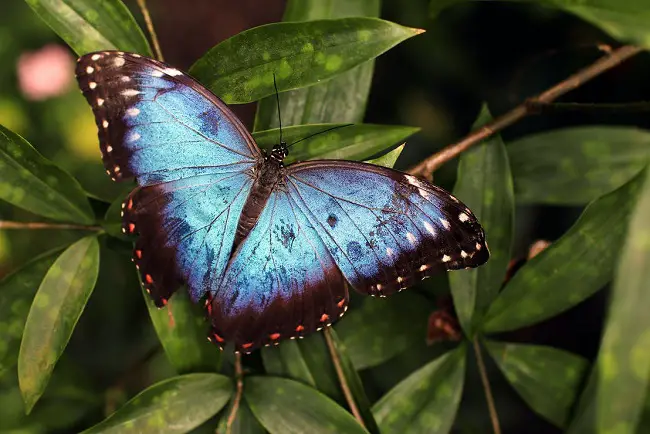
Why are monarch butterflies so special?
Apart from being endorsed as the most beautiful butterfly on the planet, they help in maintaining the ecosystem of both plant and animal life.
They are the main source of food for birds, small insects, and animals.
They help in pollination while they feed on nectar from flowers.
They are capable of traveling around 50 to 100 miles per day, and the longest travel ever recorded by a Monarch is around 265 miles per day during the migration process.
Do butterflies go to sleep? How can you tell if a butterfly is sleeping?
Butterflies don’t have the habit of sleeping at all.
They tend to rest during the nighttime or when the climate is cool.
Even when they rest, they keep their eyes wide open to stay alert to escape any sudden attacks from predators or other external factors.
Usually, they hang upside down from the bottom of the leaves or twigs.
The Conclusion
If you are still trying to eliminate beautiful butterflies from your backyard garden, think again!
Unless they are wild African butterflies, they are not harmful and can help humans in many ways.
You should instead leave them as it is around your home.
While making your garden a little more colorful will help the flowers pollinate and eat plenty of weedy plants.
Few species (like harvester butterflies in their caterpillar stage) will eat aphids to provide a natural form of pest control.
And many more will serve as an essential food source for other animals, birds, and bats.
Share the post "Butterflies in Garden: Things to Know Before Getting Rid of Them"

Welcome to ProShieldPest.com. I am Tina Jones. I have been working as a pest removal professional in Winslow, Arizona lately. At present, I love to spend my time with my family as a retiree.
Here I share all my knowledge and experiences to help people understand better how they can stop pests at their homes without actually killing them. Hopefully, the information you will find here will help in safeguarding your home! You can check more about me here.


